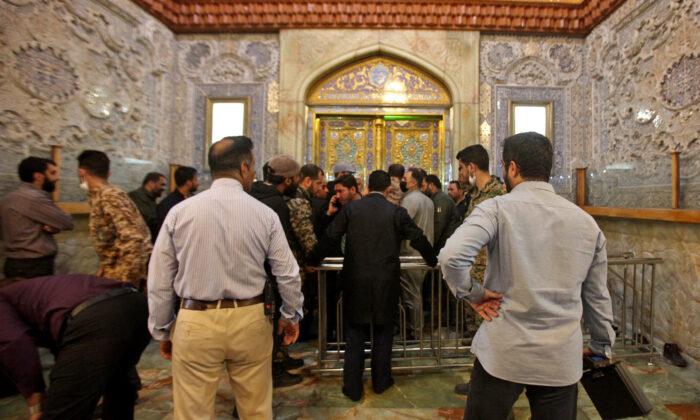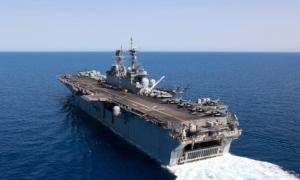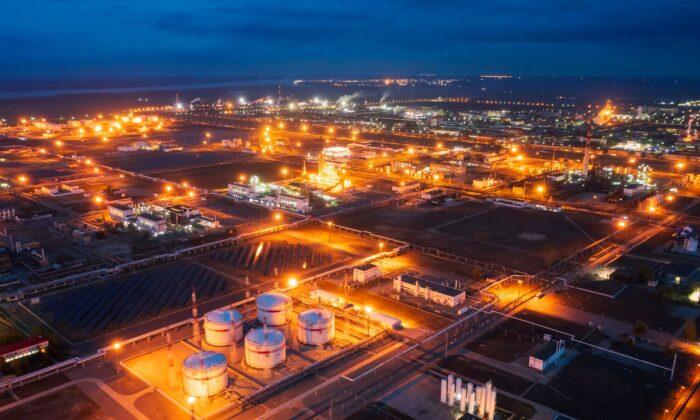Iranian authorities have detained eight foreign nationals in connection with a deadly attack on a religious shrine in the country’s Fars province, local media reported on Aug. 14.
One day earlier, a gunman opened fire on the Shah Cheragh shrine in the city of Shiraz, killing one person and injuring 10 others before being arrested by police.
According to the local authorities, the alleged perpetrator remains under interrogation.
Iranian Interior Minister Ahmad Vahidi visited the shrine in the immediate wake of the attack. During the visit, he told Iranian state television that the assailant was a member of a “terrorist network” based outside the country.
On Aug. 14, judicial officials in Fars said the attacker had been identified as a citizen of Tajikistan.
Seven other suspects, whose nationalities remain unknown, have since been detained in connection with the attack, they noted.
Iran’s Fars News Agency later cited an “informed source” as saying the attacker had been trained in Afghanistan.
No group has yet claimed responsibility for the attack.
Among Shiite Muslims, who account for the majority of Iran’s population, the Shah Cheragh shrine is considered the country’s second-holiest site.

Bullet holes on the wall and blood on the ground after gunmen attacked the Shah Cheragh shrine in Shiraz, Iran, on Oct. 26, 2022. Mohammadreza Dehdari/Iranian Students' News Agency, ISNA via AP
It wasn’t the first time in recent history that the religious site has been attacked by gunmen.
In October 2022, a similar attack on the same shrine left more than a dozen Shiite pilgrims—including several women and children—dead.
Dozens more were injured before the assailant was shot and injured by security forces. Also reportedly a Tajik national, the attacker later succumbed to his injuries.
The “Islamic State” terrorist group (also known as ISIS), speaking via its Amaq News Agency, eventually claimed responsibility for the attack.
In 2017, the same group claimed responsibility for a pair of deadly bombings that targeted Iran’s Parliament building and the tomb of Ayatollah Ruhollah Khomeini, who founded the Islamic Republic in 1979.

Iranian demonstrators take to the streets of the capital Tehran during a protest for Mahsa Amini on Sept. 21, 2022, five days after the young woman died in custody while under arrest by the country's morality police. AFP via Getty Images
Last month, two alleged accomplices of the gunman were executed after being sentenced to death by an Iranian court.
During their trial, the two men said they had been in contact with the Islamic State in neighboring Afghanistan, according to Iranian press reports.
Speaking after last year’s attack, Iranian President Ebrahim Raisi claimed that Tehran’s foreign enemies “sought revenge through violence and terror” after having “failed to divide the nation.”
In reference to the Islamic State’s claim of responsibility, Mr. Raisi went on to assert: “This raises the question of who created the terror group ... to sow discord among countries of West Asia.”
Blaming ‘Foreign Enemies’
Notably, last year’s attack came amid a spate of anti-government protests in Iran, which were sparked by the death in mid-September of a young woman while in police custody.The incident triggered a wave of violent demonstrations in several Iranian cities, including Tehran, Esfahan, Tabriz, and Mashhad.
Both demonstrators and security personnel were killed in the protests, during which several foreign nationals were detained for allegedly inciting the unrest.
At the time, Tehran blamed the disturbances on external enemies, including the United States and Israel, while providing little evidence for the claims.
U.S. officials, for their part, openly supported the demonstrators, accusing Tehran of committing rights abuses.
In an Oct. 16, 2022, interview, U.S. national security adviser Jake Sullivan said Washington had adopted a “range of aggressive actions to try to support the protesters.”
Tehran, for its part, viewed the assertion as proof of U.S. complicity in the demonstrations.

Russian Foreign Minister Sergei Lavrov (R) and his Iranian counterpart, Mohammad Javad Zarif, attend a press conference in Moscow on May 8, 2019. Evgenia Novozhenina/Reuters
On Aug. 14, Moscow “strongly condemned” the latest shrine attack, voicing its readiness to step up cooperation with Iran in the field of counter-terrorism.
“We reaffirm our readiness to further boost cooperation with our Iranian partners in the fight against terrorism,” Russia’s embassy in Tehran said in a statement.
On the same day, Aziz Nasirzadeh, deputy chief-of-staff of Iran’s military, arrived in Moscow to attend a high-profile military forum hosted by Russia.
Upon his arrival, Mr. Nasirzadeh told reporters that the two countries were actively cooperating to “enhance international security.”
“Sovereign countries that respect territorial integrity ... should exchange views to counter crises and insecurity created by the United States and its allies,” he was quoted as saying by Iran’s IRNA news agency.
In a video address to forum participants, Russian President Vladimir Putin said Russia was “open to deepening technological partnerships and defense cooperation with other countries.”
This applied especially to countries that “seek to protect their national interests and ... believe that it’s crucial to build a system of equal and indivisible security that will reliably protect every country,” he said.
For the past several years, Russia has viewed Iran as a strategic ally in the region. The two countries’ militaries continue to cooperate closely in Syria, where they both support the government of Syrian President Bashar al-Assad.







